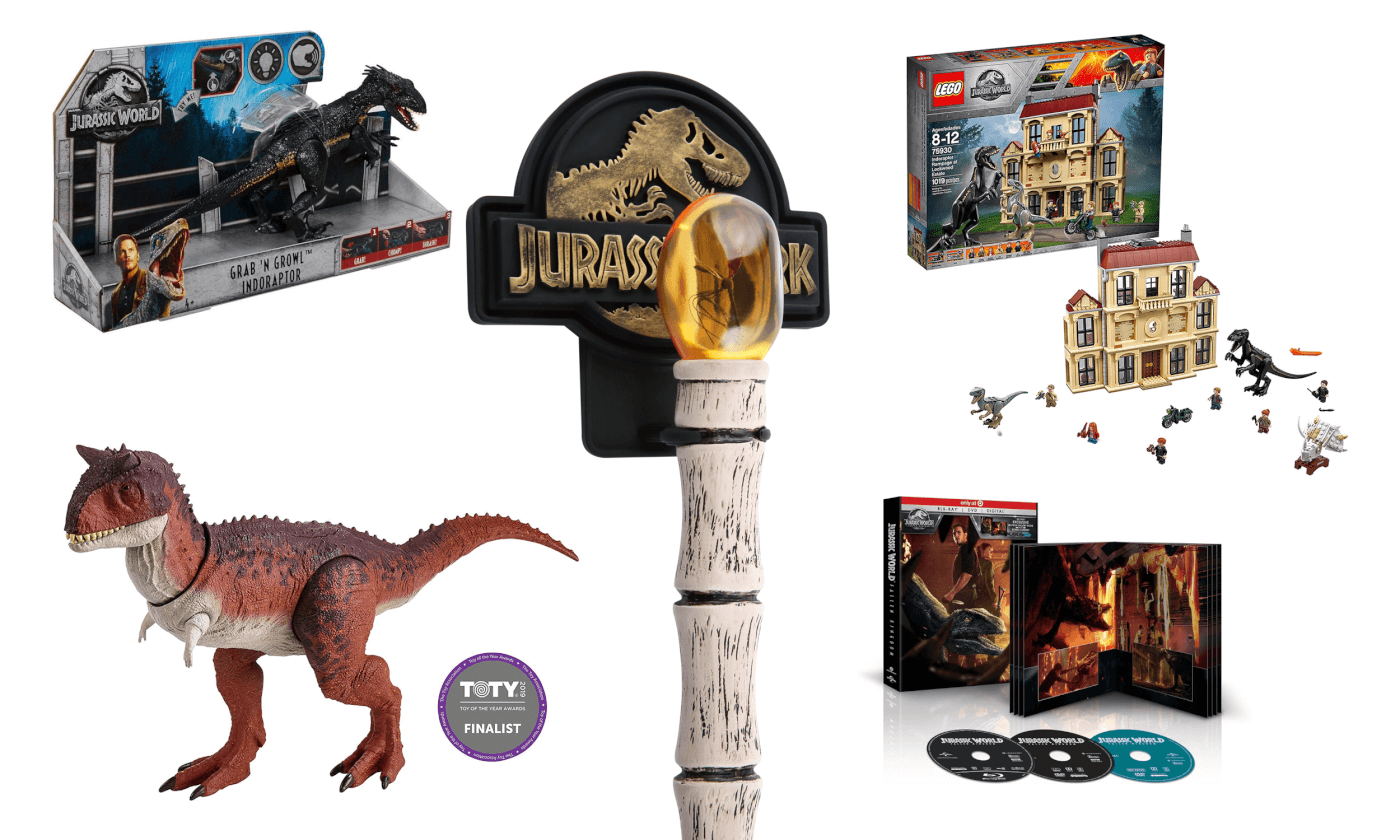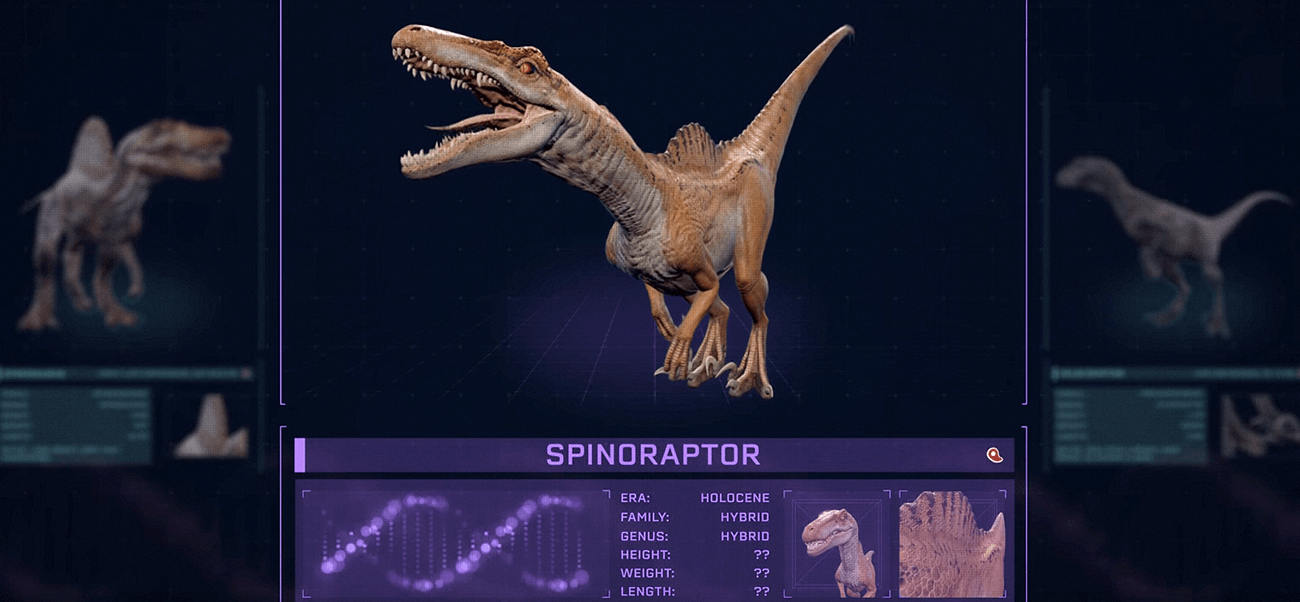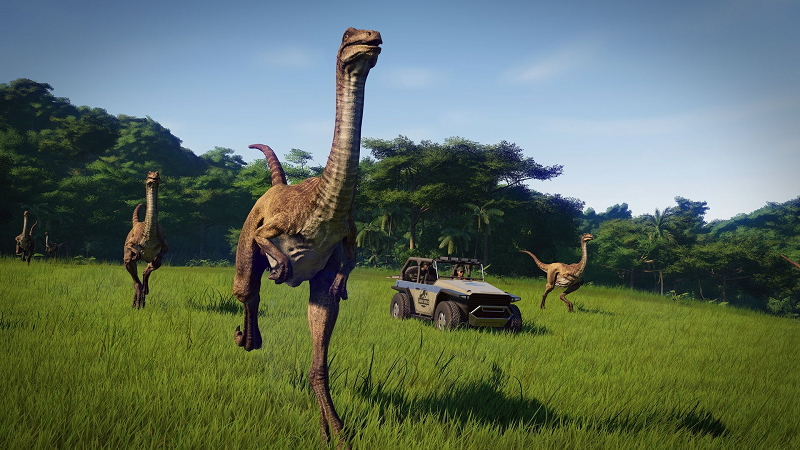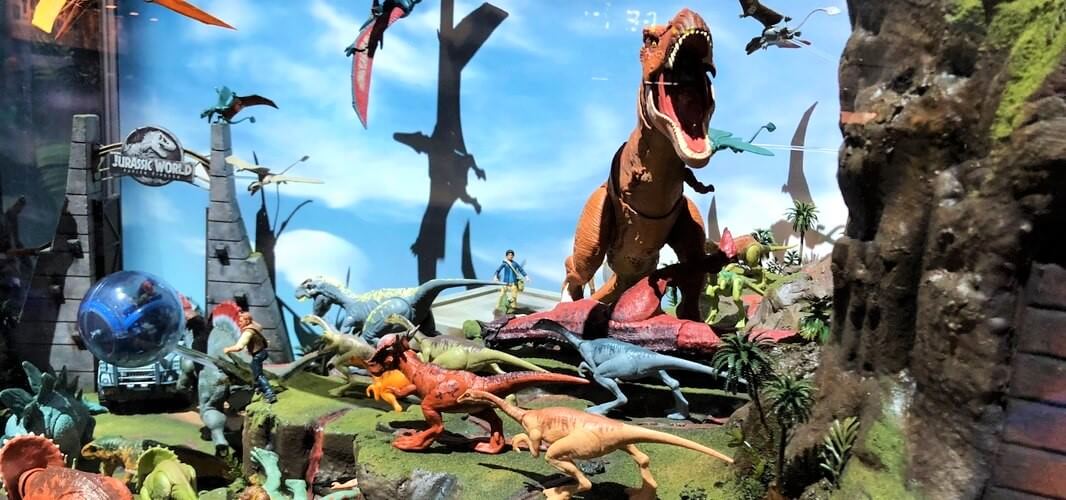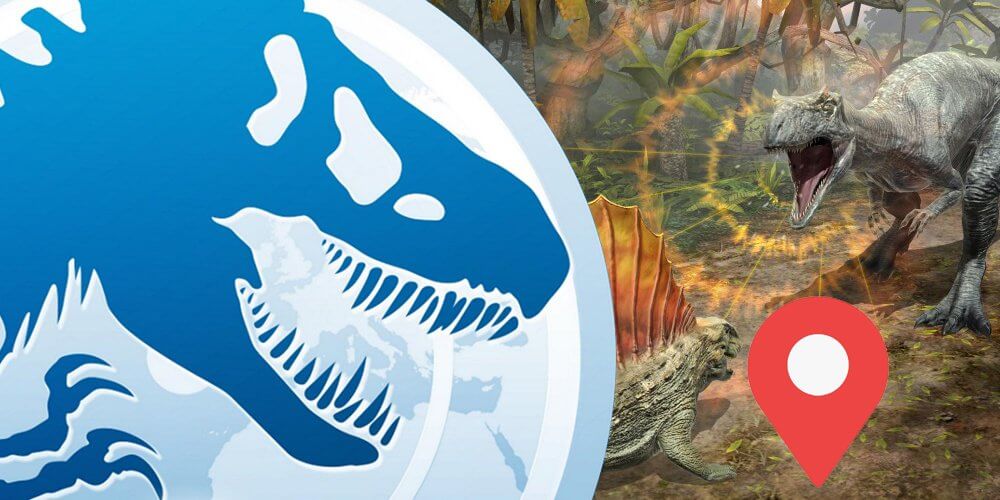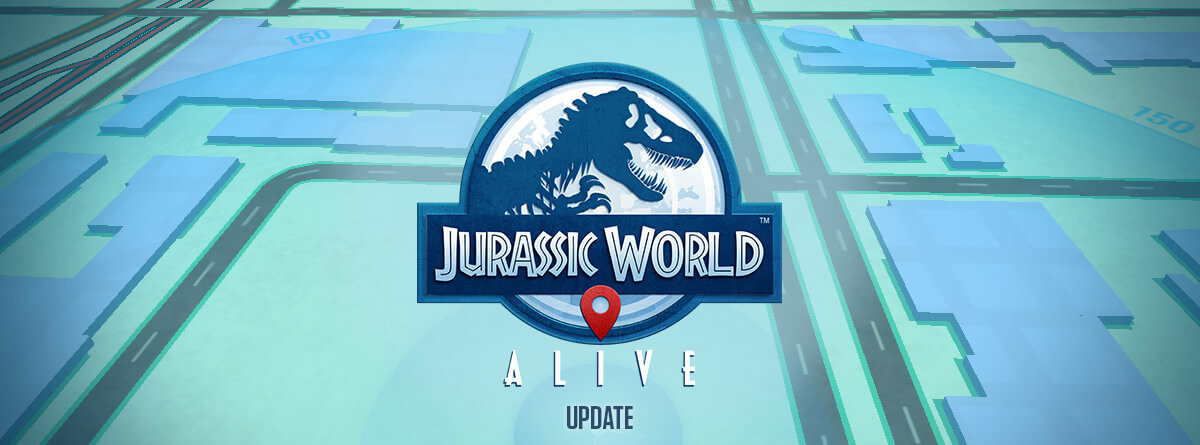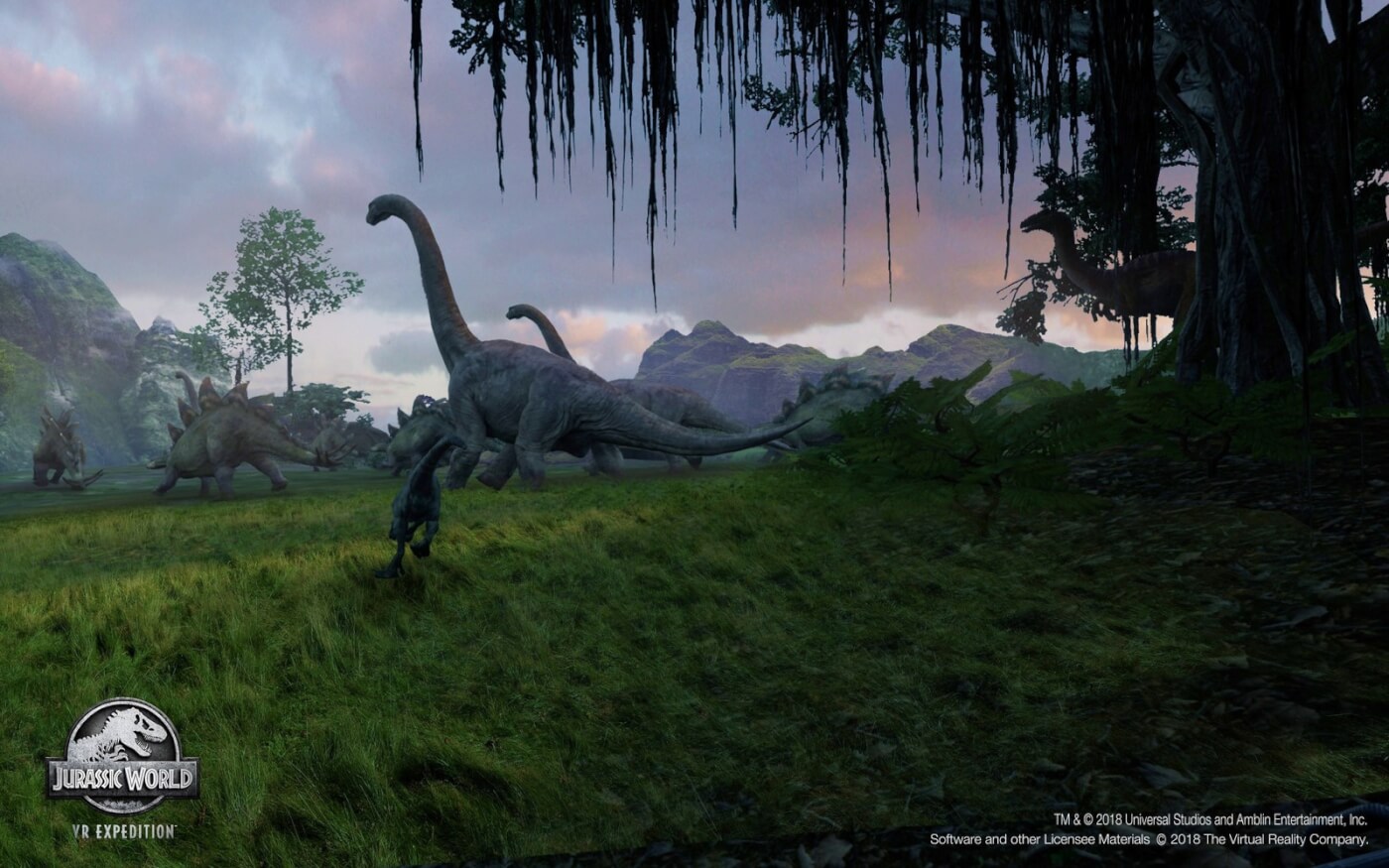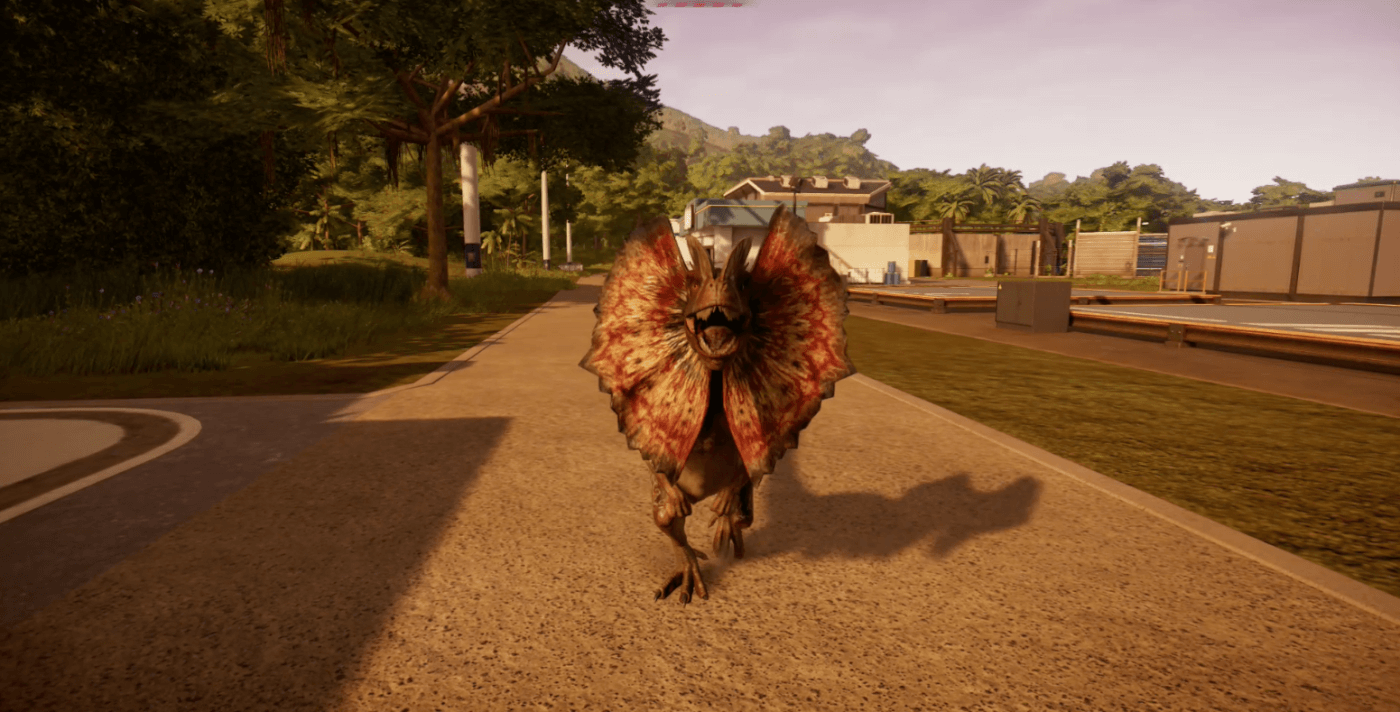It’s the most wonderful time of the year, and while Jurassic may be a Summer film series, the merchandise goes hand and hand with the snowmen and long shopping lines. Whether you’re shopping for yourself, Christmas, or otherwise, there is no short supply of dino-themed gifts out there.
We’ve accumulated a list of some of our top picks of Jurassic World merchandise, perfect for fans of all ages to make your shopping easier:
Fallen Kingdom Blu-ray & DVD

This one is a given, and odds are you already own one of its many releases. However if you’ve yet to pick a copy up, or are buying for another lucky fan, here are some of our top version choices.
Jurassic World: 5-Movie Collection
Target Exclusive set (with additional special features and art book)
Standard Blu Ray/DVD
John Hammond’s Amber Cane Collectible

Celebrate the legacy of Jurassic Park by bringing home a piece of history with this exclusive limited edition 1:1 prop replica of John Hammond’s Amber Cane, cast from an original studio prop with an expertly crafted finish. Special Jurassic Park logo plaque, hanger clip, and wall mount hardware included.
This official prop from Chronicle Collectibles is exclusively sold at Paradise Collectibles, and is limited to 1000 units. Check out this review from our friends at Jurassic Collectibles!
LEGO Fallen Kingdom Sets

Who doesn’t love when LEGO combines its forces with dinosaurs, especially Jurassic Park dinosaurs? These LEGO sets are sure to provide long brick building fun for fans of all ages, and are primarily based upon moments from the latest Jurassic World. The following sets are our top picks from the line, varying in price:
Indoraptor Rampage at Lockwood Estate
Stygimoloch Breakout
Dilophosaurus Outpost Attack
T. rex Transport
Carnotaurus Gyrosphere Escape
Jurassic Park Velociraptor Chase
Mattel Thrash ‘N Throw Tyrannosaurus Rex

Get ready for thrilling action and adventure with Jurassic World! Thrash ‘n Throw Tyrannosaurus Rex is in the style of the fan-favorite character from the original Jurassic Park. Now she’s back and better than ever with awesome action features! In addition to authentic sculpt and decoration, Thrash ‘n Throw Tyrannosaurus Rex has sound effect features like chomping and stomping, an impressive roar and a HUGE bite. Use the tail activation to open mouth and pick up other human and dinosaur action figures, and then thrash and throw them across the room! Recreate all your favorite epic dinosaur action scenes from the movie, but watch out—this Tyrannosaurus Rex is ready for a fight!
Mattel Real Feel Mosasaurus

Get ready for thrilling action and adventure with Jurassic World! Mosasaurus, the colossal swimming creature, is back again and makes a bigger splash than ever in the film! This action figure is inspired by the movie and comes in a massive size that will thrill fans! Mosasaurus features authentic textured skin, realistic sculpting and articulation that makes this colossal creature come to life! Colors and decorations may vary. Are you the ultimate dinosaur expert? Download the Jurassic World Facts app to bring your Mattel Jurassic World dinosaur figures to life and learn fun facts!
Mattel Grab ‘N Growl Indoraptor

Get ready for thrilling action and adventure with Jurassic World! When an Indoraptor escapes at Lockwood Estate, no man, woman, child, or animal will be safe during his hunt—especially with his night-vision capabilities! An abomination hybrid of the villainous Indominus Rex and the vicious Velociraptor, Indoraptor is the most terrifying and deadliest dinosaur ever masterminded—the latest brainchild of Dr. Wu. Inspired by the film, Grab ‘n Growl Indoraptor wreaks havoc and fear with his mere presence. His ominous features include red eyes that light up and glow, slick black scales, long arms with dagger-like claws and extra articulation that he will use to catch anyone that crosses him. And watch out for his huge terrifying SCREECH and realistic dinosaur sound effects! To activate, slide the switch located on the tail for grabbing action and lights and sounds; push the button for chomping action and lights and sounds; and move the tail around for thrashing action! Act out ferocious battle scenes with Grab ‘n Growl Indoraptor and relive all the exciting adventure and terror of the movie!
Mattel Roarivores

Get ready for thrilling action and adventure with Jurassic World! Roarivores dinosaur action figures are inspired by the movie and feature push button sound activation and signature attack moves iconic to their respective species. Play out movie action scenes with signature attack moves like chomping, biting and head butting. Figures also include articulated arms and legs, realistic sculpting and authentic decoration. Choose from Triceratops, Baryonyx, Metriacanthosaurus, Allosaurus, and more!
(Note, subject to availablity – MSRP is $14.99 but third party retailers may charge more)
Metricanthosaurus
Baryonyx
Allosaurus
Pachyrhinosaurus
Pteranodon
Ceratosaurus
Mattel Battle Damage Toys (Walmart exclusive)

Get ready for thrilling action and adventure with Jurassic World! These Battle Damage dinosaur action figures have a spring-loaded damage panel feature that snaps back on impact to reveal the battle wound! Kids will love battling it out again and again to see the results. Just reset the Battle Damage action figure to play out favorite action battles from the movie again and again! Choose from Battle Damage Stiggy, Battle Damage Velociraptor Blue, Battle Damage Pachycephalosaurus, Battle Damage Herrerasaurus, Battle Damage Gallimimus and more!
(Note, subject to availability – Basic dino MSRP is $9.99 but third party retailers may charge more)
Velociraptor Blue
Gallimimus
Herrerasaurus
Stygimoloch
Tyrannosaurus Rex & Monolophosaurus (deluxe set)
Mattel Legacy Collection (Target Exclusive)

The Jurassic World Legacy Collection roars into action celebrating classic moments, themes and characters from the blockbuster film franchise! These dinosaur action figures feature articulated arms and legs, realistic sculpting and authentic decoration. Each dinosaur also has an action feature unique to its character and species like chomping, jumping, flapping or spitting! Choose from ramming Pachycephalosaurus, spitting Dilophosaurus, flapping Pteranodon, leaping Velociraptor and biting young Tyrannosaurus Rex action figures.
(Note, subject to availability – Basic dino MSRP is $9.99 but third party retailers may charge more)
Velociraptor
Pachycephlasaurus
Gallimimus
Young Tyrannosaurus Rex
Dr. Grant and Dinosaurs 6 pack
Mattel Attack Pack Dinosaurs

Get ready for thrilling action and adventure with Jurassic World! These Attack Pack dinosaurs are inspired by the movie and are known to herd, hunt and attack in packs. Each Attack Pack dinosaur figure includes five points of articulation, realistic sculpting and authentic decoration. Choose from Velociraptor Blue, Green Velociraptor, Dilophosaurus, Gallimimus and Dimorphodon. Each sold separately, subject to availability. Colors and decorations may vary. Are you the ultimate dinosaur expert? Download the Jurassic World Facts app to bring your Mattel Jurassic World dinosaur figures to life and learn fun facts!
(Note, subject to availability – Basic dino MSRP is $7.99 but third party retailers may charge more)
Dilophosaurus
Minmi
Dracorex
Rhamphorhynchus
Velociraptor Delta
Green Velociraptor
Velociraptor Blue
Mattel Action Attack

Get ready for thrilling action and adventure with Jurassic World! These Action Attack dinosaur figures capture the ultimate movie action with their unique action-attack features! Add realistic sculpting and authentic decoration, and these Action Attack dinosaurs come to life ready for dinosaur action! Choose from Action Attack Carnotaurus (press button to make the head strike forward and jaws chomp) and Action Attack Stegosaurus (press a spine plate to trigger the tail swipe).
(Note, subject to availability – Basic dino MSRP is $19.99 but third party retailers may charge more)
Stegosaurus
Carnotaurus
Suchomimus
Mattel Human Action Figures

Get ready for thrilling action and adventure with Jurassic World! These action figures are inspired by characters in the film and feature realistic sculpts at 3 ¾” action scale. Each comes with an accessory or dinosaur action figure so kids play out their favorite Jurassic World moments. Choose from Owen and Baby Blue or the Mercenary and Dimorphodon. Relive all the action and adventure of the movie with these action figures!
(Note, subject to availability – Basic figure MSRP is $7.99 but third party retailers may charge more)
Owen & Baby “Blue”
Claire & Stegosaurus
Maisie & Tyrannosaurus Rex
Zia & Triceratops
Mercenary & Ankylosaurus
Wheately Dino Trophy Hunter
Jurassic Funko Pop Collection

From classic Jurassic Park, to Jurassic World: Fallen Kingdom, these cute collectible Funko Pops are an affordable gift sure to please!
(Note, subject to availability – Base Pop MSRP is $9.99 but third party retailers may charge more)
Smart Arts Gallery Collection

From jewelry, bottle openers, and collectible artwork this Jurassic Park and Jurassic World collection is perfect for fans who aren’t into toys. Take a peek, and spare no expense!
Jewelry
Raptor Claw Bottle Opener
Art
Ginormous Velociraptor Blue Plush

Get ready for thrilling action and adventure with Jurassic World! fan favorite character, Velociraptor Blue is ferociously cute and comes in a kid-sized Ginormous scale that is approximately 3 feet tall and over 4 feet long from nose to tail! this Ginormous Velociraptor Blue figure is made of soft plush material and features realistic eye detail, sculpted claws on her arms and feet and a big Blue streak on her body, of course! kids will love hugging and cuddling with this kid-sized Ginormous fan favorite plush figure!
Jurassic World Evolution

Take control of operations on the legendary islands of the Muertes archipelago and experience the majesty and danger of awe-inspiring dinosaurs. Every choice you make between Entertainment, Science and Security Divisions influences your journey through an unfolding narrative and decades of Jurassic lore.
Xbox One
PlayStation 4
PC / Steam
Dinosaur Protection Group Coffee Mug

Welcome to the Dinosaur Protection Group. This olive green coffee mug from Jurassic World Fallen Kingdom features a retro inspired “Save the Dinos” design.
Buy it now exclusively at Boxlunch!
Jurassic Park: Knitted Christmas Jumper

The Knitted Christmas Sweater Preorder is officially licensed Jurassic Park merchandise. You can be confident that it will be of the highest quality and give you that warm, fuzzy feeling that only comes from supporting the creators.
